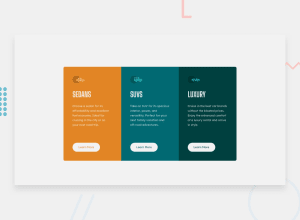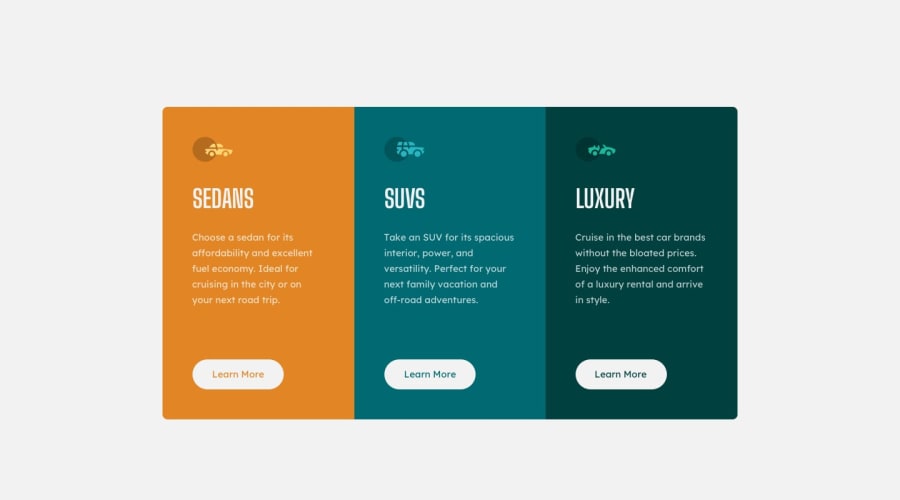
Three cards layout using pure CSS and flexbox/grid
Design comparison
Solution retrospective
I wanted a small and fast project to have fun today and this one was great.
- I use only pure CSS.
Maintainability:
- I borrow some tips from BEM without doing full BEM. I only use someting useful for maintainability : separation of css features.
- I use variables for a better maintainability too : I need only to change these variables.
Design:
- I try to maintain size to improve the design rule of consistency : I used multiple of 6 (font-sizes) and 8 (white spaces).
Performance:
- I customize my own reset.css as I didn't want to made useless rules for this project.
- I may have done css in only one file (for performance reasons) but to better organized css I separate css files and comments to search easily inside css files (with cmd or ctrl+F).
Questions:
- You can also help me to find a better way to use flexbox and grid: what can be improved ?
- I try to follow "DRY" but tel me if I can do better.
- And every other advices for best practices are welcome to improve myself.
I have done nothing for accessibility (aria-label etc.), I can improve this later.
Have a good moment discovering my project. :)
Community feedback
- @SakeranPosted over 2 years ago
Hi Amaury, nice job on the project.
On the topic of accessibility, I don't think there's much more you really need to do here. I was able to navigate the component easily enough using both my keyboard and a screen reader. The only a11y-ish issue I can think of is actually in the icons' alt text. In this particular case, my screen reader reads off "graphic, sedans car", which is a little redundant when the very next line is "heading level 1, sedans".
Since the icon is mostly a decorative element that doesn't add to an AT-user's experience, in cases like this it's sufficient to just provide an empty alt attribute:
<img alt="" src="..." />. This is just a minor optimization, though, and I don't see any other points of confusion where you would need to use ARIA to clarify the document structure.As for your CSS, it doesn't appear as if you had much trouble implementing most of the design. Your use of
display: gridfor centering the component definitely works, but note that the smallest width the "centered" cell will ever take on is 45rem, or 720px. Given that your first desktop breakpoint is 476px, this means that the component will overflow the screen's horizontal space on the 476px-720px range. The simplest fix here is to probably just increase the breakpoint to something like 768px instead.Additionally, it looks like you came up on the problem of how to size the component on very large screens, which would explain your additional breakpoint at the 1700px mark. If you'd like a little more control over how large the centered component (
.cards-container) can grow, one thing you can do is set amax-widthon it, for examplemax-width: 768px. If the component isn't centered within its grid cell after this, you can also setplace-self: centeron it. Alternatively, you could still go with the breakpoint at 1700px, and just use a fixed width, e.ggrid-template-columns: 1fr 768px 1fr.Hope some of this was useful to you.
Marked as helpful1@ExploryKodPosted over 2 years agoHi @Sakeran, your comment is very useful and I thank you very much for it. I'll try your advices to adjust the card-container in screen between 476 and 720px and in big screen. You are right I didn't see I made a mistake in my breakpoints. On large screens, using max-width is a good idea and also changing grid-template-column and use a place-self to center.
For accessibility, it is a great idea to use a real screen reader, we can see that some issues appear as the fact that it read redundant text. I'll fix this.
have a good day and a happy coding !
0
Please log in to post a comment
Log in with GitHubJoin our Discord community
Join thousands of Frontend Mentor community members taking the challenges, sharing resources, helping each other, and chatting about all things front-end!
Join our Discord
